
Publisher:
Bonnie King
CONTACT:
Newsroom@Salem-news.com
Advertising:
Adsales@Salem-news.com

~Truth~
~Justice~
~Peace~
TJP
Jul-26-2010 02:30


 TweetFollow @OregonNews
TweetFollow @OregonNews
JPAC May Return Suspected Remains of Vietnam War Journalist to Cambodia
Tim King Salem-News.comYujiro Takagi and Ankira Kusaka were captured and believed to be held with Sean Flynn and Dana Stone on 6 April 1970, in Cambodia; includes last footage of Sean Flynn ever recorded.
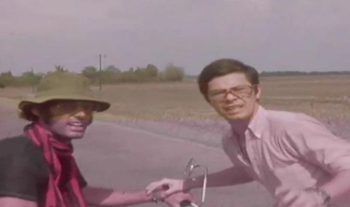 French TV crew's last shot of Sean Flynn alive proves Flynn and Dana Stone did not foolishly ride up to Communist forces planning to be captured. Photos below of human remains recovered in Cambodia by Fred Wissink. Photos of x-rays taken at the Phnom Penh Odontology Academy prior to hand over of remains to US authorities. Special thanks to Antoine Caillant in Ho Chi Minh City, Vietnam. |
(VUNG TAU, Vietnam / SALEM, Ore. ) - The man who set out to locate the remains of famed Vietnam War Photojournalist Sean Flynn, son of the acclaimed actor Errol Flynn, says the U.S. government is not cooperating with the Flynn family or his team, in helping properly identify the remains, which appear to not be Flynn's, but possibly one of two missing Japanese journalists who were last seen in the same area.
Australian searcher and investigator Dave MacMillan, says they have been told the human remains will be returned to the Cambodian government, a nation in the spotlight over war crimes committed in the 1970's, against people like Sean Flynn.
Working with his brother Adam MacMillan and investigator, Scott Brantley, Macmillan has spent the last two years investigating the fates of several foreign journalists who were captured in Cambodia during the Parrots Beak offensive.
This operation was launched by American and South Vietnamese (ARVN) forces against Vietcong strongholds and supply lines. This coincided with Richard Nixon's decision to launch an illegal bombing campaign of Cambodia, which he strongly denied to the public at the time.
If you caught my previous report, Clearing the Air for Missing Photojournalist Sean Flynn's Family, you know that MacMillan was hired by Sean Flynn's sister, Rory Flynn Amir in Los Angeles, to locate her brother's remains in a location identified by several sources, and recently investigated by a Vietnam Veteran named Dan Smith from the state of Washington, who made amazing progress in helping establish the site[1].
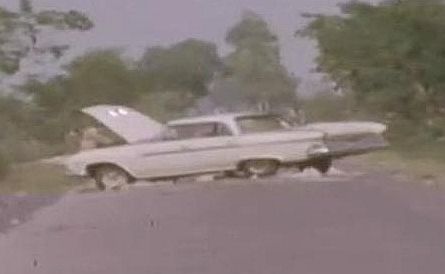 Fuji TV cameramen Yujiro Takagi and Ankira Kusaka, were captured by the |
Now Dave MacMillan says he is concerned that the remains of one of these missing men, "May be bound for a destination where they will never be identified due to bureaucratic incompetence and corner and budgetary cutting on behalf of the US Army."
He learned through Mrs. Rory Flynn Amir, that JPAC has informed her that the remains which his team recovered in Phka Dong village, Phum Khmum District, Kampong Cham on 14 March 2010, are to be handed over to the Cambodian authorities because the US Army believes the remains to be that of a native Cambodian.
MacMillan said, "We believe considering that the US government has not tested the remains against the DNA and biological profiles of the other 10 men of non-American nationality whose data they do not have on file, and circumstantial and physical evidence in this case presents a high possibility that the remains maybe of one of two Japanese journalists."
He believes that JPAC should hand the remains over to the Japanese government for testing due to the fact that Japanese citizens (and Fuji TV cameramen) Yujiro Takagi and Ankira Kusaka were captured and believed to be held with Mr. Flynn and Mr. Dana Stone on 6 April 1970, in Chi Pou village, Svay Reing, Cambodia.
Exclusive photos of excavation: Scott Brantley |
"Eyewitness statements also suggest that these five men were executed in and around the village of Phka Dong and the clandestine grave site we excavated on March 14th is last resting place of one of the executed journalists," MacMillan added.
The following information comes from the Family Conference in Raleigh, South Carolina earlier this year, by the US Army/JPAC authorities.
The case file presents in short form, information gathered by the US government over the last 40 years in relation to the disappearance of the group of journalists.
700405 Giles Caron 1583-0-01
700405 Michel Visot 1583-0-02
700406 Guy Mannoteaux 1583-0-03
700405 Claude Arpin 1585-0-01
700405 Ankira Kusaka 1585-0-02
700405 Yujiro Takagi 1585-0-03
700406 Sean L Flynn 1588-0-01
700406 Dana Stone 1588-0-02
700408 Georg Gensluckner 1589-0-01
700408 Dieter Bellindorf 1589-0-02
Information within this document, interviews and investigative data collected by MacMillan's team and JPAC lab findings, suggest that the remains are "Asiatic" and the photographs showing sophisticated dental work namely (porcelain infused crowns and bridge work) indicating that there is a high likelihood that the remains may be that of either Mr. Takagi or Mr. Kusaka, and therefore should not be disqualified until further testing is conducted by the Japanese Government. It is a rare opportunity, MacMillan says.
Christian Bousquet and Sean Flynn: Yujiro and Ankira were on a day trip from Vietnam with Claude who was the owner of the white car which was infamously shot up, then parked across the road after they were captured. Contrary to popular belief and supported by newly acquired video footage of Sean through the French television archives, Sean and Dana didn't roar off into the distance foolishly taking photographs. They went up to the car to check on the status of the other journalists who had just been captured and ambushed, and therefore befell the same fate. You can make you own mind up but you can see the worry and concern on the French journalist, the last one to see them alive before they disappeared, as Sean explains to him in French what is happening with regard to troop movement, stating the decision to try to see if they could assist the three captured men.
"Four different dentists including one Los Angeles based dentist, one Cambodian, the Odontology Academy of Cambodia in Phnom Penh and a US army odontologist on close examination of photographs,the actual portion of jawbone and x-rays have all agreed on the fact that the dental work is not characteristic of domestic and Cambodian dental work (in the past or in contemporary times) and have all said with certainty that they believe due to the age of the remains and the unique level of dental technology that the jaw bone is that of a foreigner."
The following exerpts from the Family Conference Document, presents the case that the US Army's Field Investigation Teams have gathered information over the last 40 years which indicates that there is a high probability the remains very well although not American are most likely the remains of one of the journalists.
From the Family Conference:
On page one of the Family Conference Document, paragraph two of the document states:
"Within a four day period, 5-8 April 1970, four groups of journalist were captured by communist Vietnamese forces along Route 1 between Chi Phu and Bavet. Aside from the two Americans Flynn and Stone. The following were also captured: three Frenchmen captured on 5 April;two Japanese a Frenchmen captured on 6 April; and a Swiss and German captured on 8 April. All 10 of these journalists remain unaccounted for."Still on page one of the Family Conference Document, paragraph four of the documents states:
"BACKGROUND: Several journalists were captured in Cambodia during 5-8 April 1970.1583: Caron, Visot and Hannoteaux (all French) captured in a car on 5 April.1585:Arpin-Pont(French) and Kusaka and Takagi (Japanese) captured in a car on 5 April with interpreter and driver.1588: Flynn and Stone (American) captured on motorcycles on 6 April.1589: Gensluckner (Austrian) and Bellindorf (German) captured in a car 8 April, possibly with Khmer driver Ung Lin Yieng."On Page two of the Family Conference Document, paragraph four of the document states:"Msg dated 21 May 70: A source reported that on April 24, while visiting a Cambodian friend in Prey Bot Hamlet (probably WT 99 45), Boc Mol village, Kampong Chak District Svay Rieng Province, he observed four Caucasian and two Asian prisoners being moved north by 18 armed VC. His description of one of the journalists matched that of Sean Flynn (tall, very long light-coloured hair, and pants rolled up to the knees)"
On Page 4 of the Family Conference Document,paragraph 6,of the document states."IIR 6 024 055 97,130820Z Jun 97. Mao Phouk reported that four foreign journalists were captured near Ba Vet. One was a tall American with long flowing hair, the second was a much shorter American, and the final two were Japanese. From the place of capture, they were escorted through Phum Chantrei (WT7947), Kampong Krasang (WT7875) Romeas Hek District; Phum Thnaot Kadas in Kamchay Mea District; through Kanchchriech District; into O Reing Ou District. All four were moved from O Reing Ou distirct to Tboung Khmum Distirct, he next saw them in Phum Trapeang Russei. All four were eventually executed. Locals in Phum Srakram might be able to identify surviving Nirasa (Khmer Rouge) who may have been involved. In the early 1970's one more journalist was taken to Phum Phka Dong(Village where our team recovered the remains on March 14th 2010), and executed shortly afterwards."On Page 5 of the Family Conference Document,paragraph 8,of the document states."IIR 6 951 1131 02,260816z Sep 02. Ok Sin said he saw two Vietnamese stop a white car and two motorcycles on the same day in 1970.The car had four persons, one Caucasian, one Japanese , a Cambodian driver, and a Cambodian interpreter."On Page 10 of the Family Conference Document,paragraph 2, of the document states."IIRs 6 024 0138 10 (191954z Mar 10) and 6024 0145 10(291621Z Mar 10)- The two IIRs provide information concerning a private excavation which took place in the vicinity of Phka Dong Village (48P WU 85634 37168), Chhouk Commune, Kroch Chhmar District, Kampong Cham Province. On behalf of case 1588 family member (Mrs.Rory Flynn Amir), two men (One Australian and One New Zealander) conducted a private investigation/excavation. On 14 March 2010 they recovered a partial set of human remains using locally hired workers and a back hoe. They did not recover all the remains because they were told the local police were en route to the site. The burial site was then filled-in by the back hoe, but the police never arrived. Remains from the lower portion of the body are believed to be still in the ground. The recovered remains consist of 13 possible pieces of bone to include a jawbone with teeth and possible bridgework. On 26 March, these remains and assorted pieces of clothing were turned over to the Stoney Beach investigator. This material will be forwarded to JPAC-CIL for forensic evaluation.DPMO Commnet- Over the years there have been several reports about foreigners being held and killed in the area. The foreigners were variously described as Caucasian, Black, Japanese and or Korean.However, the descriptions provided were limited and considering the number of journalists missing in that part of Cambodia, it is difficult to associate the reporting with a specific individual.)"On Page 14 of the Family Conference Document, paragraph 3, the document states:Jun 97JFA 97-2C Jun-Jul 1997. In Phka Dong village, Tbong Khmum District,Kampong Cha, six witnesses were interviewed, one of whom had seen a dark skinned foreigner, alleged to be an American, associating freely with Khmer Rouge personnel in about May 1970. This witness saw the man only once and had no further information as to his fate or whereabouts. At Trapeang Russei Village, of three witnesses interviewed, one reported on two Americans who lived among the KR in the early 1970's but were later executed. All three witnesses reported knowledge of two "Koreans"( likelihood of Khmer peasants at that time being able to accurately differentiate between Japanese and Koreans is unlikely) who were also held in the area but whose fate is uncertain.
These images from the research and recovery team assembled by Rory Flynn, |
MacMillan released photographs of the remains and dental x-rays collected by their team, prior to handing over the remains to the US Embassy in Phnom Penh. I am interspersing them on the right side of the following interview, along with three stills made from the film footage and more images of MacMillan and Brantley during the excavation in Cambodia.
This is a March 1975 interview conducted by US journalist Mr. Matt Franjola in Phnom Penh with a Khmer Rouge defector and ex-Khmer Rouge cadre who was stationed in Phka Dong village in the early 1970's by the name Heng Pheng. In the interview, Heng Pheng mentions the following information which coincides with eyewitness testimony's that the clandestine grave site we uncovered in Phka Dong on Mach 14th 2010 contained the remains of a foreign journalist who was beaten to death.
Interview with Heng Pheng Khmer Rouge Cadre present at execution by Matt Franjola.
I am an American journalist. I have heard you talked about an American journalist who was disappeared long time ago.
MF: Where are you from?
HP: I was from 203 region. There are 5 provinces in 203 region.
MF: Where was your native place?
HP: District of Krauch Chhmar in Province of Kampong Cham.
MF: When did you join the communist movement?
HP: In 1967
MF: And where?
HP: In Phnom Penh.
MF: How did you join the communists?
HP: At that time I joined the City Student Movement.
MF: Where did you attend school?
HP: Tuong Hiva School,It was one of the Chinese high schools in Phnom Penh.
MF: Where was it located?
HP: It was in the vicinity of the Fruit Market near Casino Motion Picture House.
MF: Are your parents Chinese or Cambodian?
HP: My mother is Cambodian.
MF: Your mother is Cambodian and your father is Chinese,is it correct?
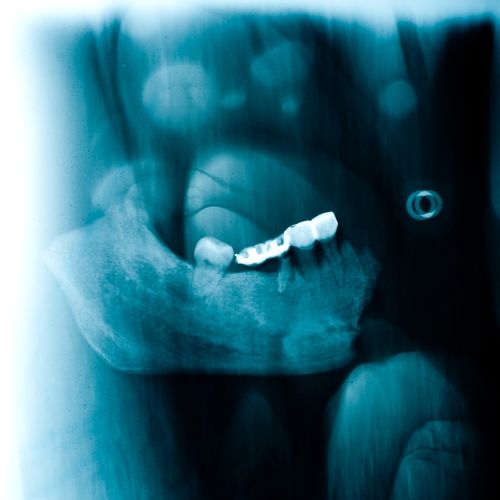 HP: No,they are both Cambodian. My uncle is a member of the Vietcong movement. He wanted me to attend Tuong Hiva School so that it would be easy for me to communicate with him.
HP: No,they are both Cambodian. My uncle is a member of the Vietcong movement. He wanted me to attend Tuong Hiva School so that it would be easy for me to communicate with him.
MF: Your parents still alive?
HP: My father was dead long time ago and my mother is living in the Khmer Rouge occupation zone in the Province of Kampong Cham.
MF: Is your father Vietnamese or Chinese?
HP: Half Chinese and Cambodian.
MF: While you were a student and joined the communists what was your job?
HP: I was assigned to handling the reception and distribution of books,pamphlets of communist propaganda and also to propagate the leaflets to the public.
MF: At the time did you believe the communist way?
HP: Yes I did. At Tuong Hiva school we used only communist books.
MF: Were they Chinese teachers?
HP: Yes. Most of the students there were sent to join the Viet Cong.
MF: Did the students live with the Viet cong in the forest?
HP:Students who strongly sympathized to the communist regime had left Phnom Penh and joined the Viet Cong in the forest by the intermediacy of Tuong Hiva School.
MF: What year did you run into the forest?
HP: In 1970
MF: Where did you go first?
HP: I first went to the province of Kampong Cham with an escort. From Kampong Cham I proceeded to 304 region,Strung Trang and finally I crossed to 203 region.
MF: What month was that?
HP: July.
MF: How did you go there?
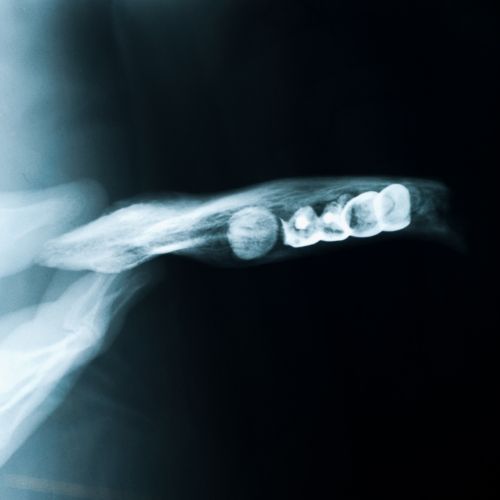
HP: Well. There was a member of the Khmer Rouge who came to Phnom Penh and took me to Kampong Cham town. From Kampong Cham I rode the bike to Stung Trang in 304 region. I crossed Stung Trang to Krauch Chhmar and then I proceeded to Chanik village which was my native place. There I worked for the Angka organization as an adviser to the students. At that time there was a rise among the Chinese people and I served behind them when the Khmer National Armed Forces (FANK) attacked Chhlong and the vicinity of Chanik in Jan-Feb 71. The Angka had decided to move their troops to the forest so that they will not facing the danger of the Khmer National Armed Forces which tried to encircle the waterfront of Chhlong. I was acrossed to 304 region until the Government troops pulled out of Chhlaung and then I moved to the forest in Bung Kek in 203 region I lived in Phka Daung. The 203 region has 5 provinces.
MF: Where was 203 region located?
HP: Right in the jungle in Phka Daung,district of Thbaung Khmum in the province of Kampong Cham.It was a communist base.
MF: Have you ever seen any American there?
HP: Never. Until late 1971 and American journalist was brought to that base and he was killed.
MF: What else did you know about that journalist?
HP: Late in 1971 the Communist took an American journalist from Route 7 to Phka Daung base.As soon as the arrived at the hospital in this base there was an order to process the mortal injection to that journalist.
MF: Did you know how they took that journalist to Phka Daung?
HP: I didn't know how they took him from Route 7 to Phka Daung but at the hospital I saw him walking.
MF: Did you work at the hospital at that time?
HP: Yes I did. After being trained from Vietnam I was assigned to work at the hospital as the head of the member of the committee in charge of the supervision of one clinic at the hospital compound.
MF: Could you tell me about the physical health of the journalist?
HP: He was sick, skinny and having a long beard.
MF: How did he dress?
HP: He dressed..I didn't remember.
MF: Was he able to walk himself?
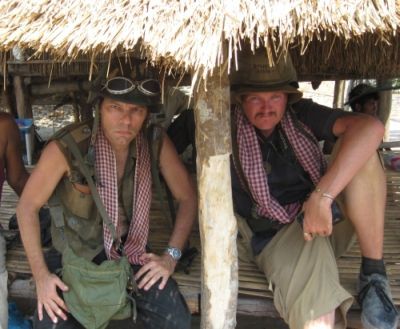 MacMillan and Brantley in Cambodia |
MF: What about his beard?
HP: His face was full of beard... hard to recognize him. He got a long hair, skinny and was white.
MF: Was he the only man you saw?
HP: He was the only man I saw. I was an eyewitness during he got the injection...and also when his body was put in the grave. I also heard some information about some other persons who had been captured I was told they were Japanese.
MF: Did you know anybody else who was captured beside that American journalist?
HP: I learned from the communist headquarters that a Japanese was also captured. He was beaten to death instead of using the mortal injection.
MF: You said that you were at the hospital..... did you see that journalist while he got the injection?
HP: Yes I did I also saw his body was taken out of the hospital and buried.
MF: How did they give the injection?
HP: They gave the first shot with one unit... he wasn't dead. Then he gave another shot with two units.
MF:Where did they take the body to?
HP:They took the body to the hospital cemetery at Phka Daung and buried there.
MF:How long was he at the hospital for before they gave him the injection?
HP: Not very long. Before they gave him the injection they just made believe that they checked on his physical examination.
MF: Did anyone talk to the journalist?
HP: It was Dr.Chan Chhoeung who talked with him.
MF: Do you know where Dr. Chan Chhoeung where he was from?
HP: I know him.He was from the North of Vietnam.
MF: Is he Vietnamese?
HP: No. He's a Khmer Viet Minh.
MF: How old is he?
HP: Mid-forties.
MF: Who was the man who gave the order to Dr. Chhoeung to perform this injection?
HP: Ta Phim was the man who gave the order.
MF: Who was Ta Phim?
HP: He was the chairman of 203 region. We called him a party secretary of 203 region.
MF: Did he sign the order?
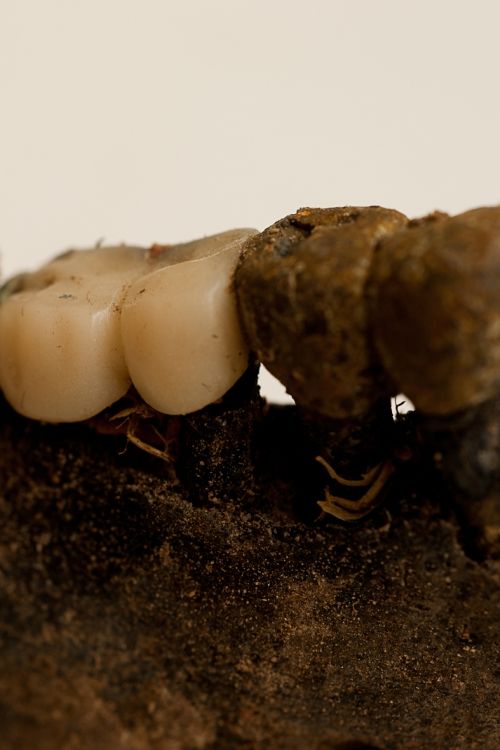
HP: I don't know but Dr.Chhoeung told me that he got the order from Ta Phim. I was present at the hospital with some medical staff. There was a meeting before the arrival of that journalist. The regional committee had issued and order to kill him. For their reason that journalist got the injection as soon as he arrived at the hospital.
MF: Was there any special name mentioned on the order?
HP: I didn't see the order. But I learned that there was an order from the meeting. Actually,before they do something the responsible man convokes all the member to attend the meeting and then he announces a statement. As to Ta Phim who was the man who gave the order to Chan Chhoeung to use the mortal injection so that Chan Chhoeung had to report to the meeting about his proper duty.
MF: Did Chan Chhoeung tell the name of that American journalist?
HP: Yes,he did. But I didn't remember his name because it was long time ago.
MF: How many persons were at the meeting?
HP: Five persons.
MF: Do you know where that journalist was captured from?
HP: Five days after he was killed I learned that he was captured on Highway One.
MF: Did someone talk anything after he was killed?
HP: With the communists nobody dared to talk something about American otherwise they will be under the watch.
MF: Could you tell me the aspect of that journalist?
HP: He was skinny with a long hair his face was full of beard.
MF: Do you know when he was captured?
HP: I don't. I only learned that he was captured on Highway One and was brought to Phka Daung.
MF: Did he speak Cambodian?
HP: I don't know because nobody spoke with him.
MF: Did he try to converse with someone?
HP: Nobody dares to communicate with him.
MF: How about people who accompanied him. Did they talk with him?
HP: Not at all. Escorts were strictly forbidden to exchange talk with the prisoner.It was so risky for any Khmer Rouge who talked with Americans. They even afraid to look at Americans.
MF: Was the hospital located at Thbaung Khmum district?
HP: It was right at Phka Daung (meaning Coconut flower in Khmer) just in the forest.
MF: Where is Phka Daung?
HP: Phka Daung is in the district of Thbaung Khmum.
MF: Now. Did you here something about the Japanese journalist?
HP: Yes I did.
MF: How soon did you hear that?
HP: Not very long.
MF: Did you know some events during the years of 1972-73 and 74?
HP: I didn't know anything because in earlier 1972 I was transferred to O Raing Euv Village in the district of Koh Sothin.
MF: Why did they transfer you from 203 region to the O Raing Euv?
HP: The communists had launched their economic program in 1972. I was transferred to work in there in the economic department... I handled the commercial section. The economic and the commercial offices were both in the same building. My president had two titles. He was the president of the commercial section and also vice-President of the economic section.
MF: The first job you got was at the hospital right?
HP: Yes. I was transfered to the economic section as soon as they started the economic program.
MF: Why didn't they keep you working at the hospital?
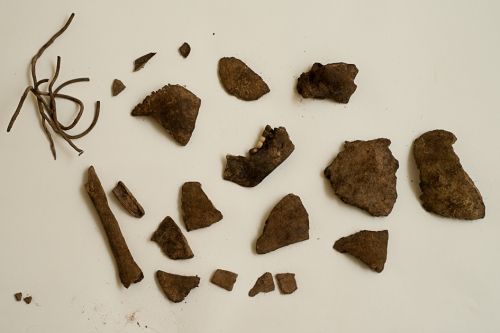
HP: I don't know. The Angka just transferred me to the economic section and finally i had to move to O Raing Euv. In earlier date the economic section was under the Chinese control. Soon the war broke, the Vietnamese had exchanged their trade relationship with the Chinese. In this regard, the Khmer Rouge started their economic program initiative to eliminate the Viet Cong's connection with the Chinese so that the Khmer Rouge could deal directly with the Chinese. I worked in the economic section as an interpreter and translator in Chinese and Cambodian for the President.
MF: Where they Chinese who lived in Cambodia?
HP: Yes. Some of them were from China.
MF: They were from China?
HP: Yes. Same thing for some Chinese residing in Phnom Penh.
MF: Who are the top officials in the Khmer Rouge? And their titles?
HP: 1: Saloth Sar the chairman of the communist party. 2: Nuon Chea president. 3: Leng Sary. 4:Ta Phim is the chairman of 203 region. His alias name is Sovanna. He was one time candidate for the House of Representatives during the election in pre-war.
MF: Was he a successful candidate?
HP: No. He was member of Pracheach Party(People's Party)
MF: Who was the fifth person?
HP: I don't know.
MF: Were these four persons top officials?
HP: They were some other members such as Tieu ol, Kuy Thuon... But I don't really know their proper numerical grade.
MF: Is Saloth Sar the highest official?
HP: Yes,he is. Saloth Sar and Nuon Chea are the top officials I've met them very often. They were instructors at the Party Political School.
MF: When did you attend the Party Political School?
HP: Once a year.
MF: What was the term of the course?
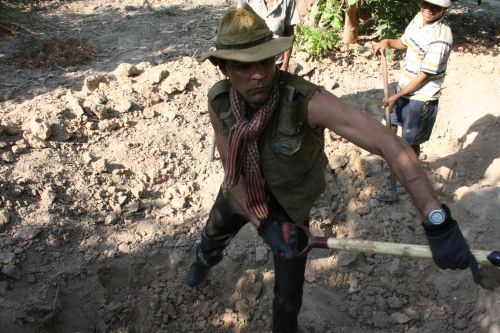 HP: These two instructors spent a maximum of one week for the teaching and then the regional chairman took charge for the course for the rest of the year. At the closing of the orientation Saloth Sar and Nuon Chea came back again and presided over the ceremony.
HP: These two instructors spent a maximum of one week for the teaching and then the regional chairman took charge for the course for the rest of the year. At the closing of the orientation Saloth Sar and Nuon Chea came back again and presided over the ceremony.
MF: Were there any party else?
HP: No. There was only the communist party.
MF: Who is Khieu Samphan?
HP: Khieu Samphan is member of the central committee party. He is the Khmer Rouge army high commander and deputy prime minister in the Royal Government of Khmer National Unification (GRUNK)
MF: That is his title but he has any power?
HP: The power of Khieu Samphan in the country is responsible for the military political indoctrination while Saloth Sar is in charge of the combat technique. The annual plan of fighting for territory liberation is handled by the secretary of the Khmer Rouge Armed Forces.
MF: Have you seen Khieu Samphan?
HP: Yes I have.
MF: How often did you see him?
HP: Many times during the year.
MF: Normally, where does Saloth Sar live?
HP: He doesn't have permanent residence but a mobile one. He got his office at 304 region. He's just moving around.... Tonight he stayed there and the next day somewhere else.
MF: Where was his permanent office?
HP: At 304 region.
MF: When did you run away from the Khmer Rouge?
HP: On November 27th,1974.
MF: Which way did you get out?
HP: I first got out of O Raing Euv to National Road #15, traversing Tonle Bet,Chup and bounded to Krek Village and then to trail #23.I went down to Smach which was in Viet Cong zone and proceeded to Tay Ninh in Vietnam.
MF: Did the communists try to follow and gunned after you?
HP:Yes. they tried to pursue me. They had sixty large prints of my picture.
MF: Did you have any pass with you on your trip?
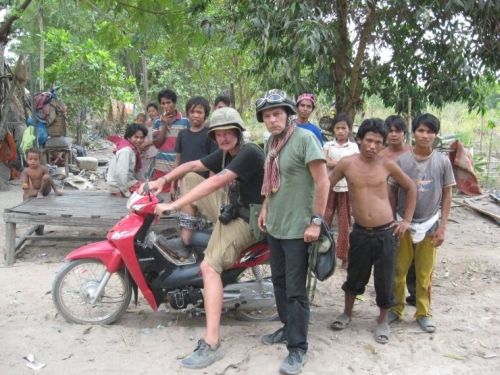 HP: As soon as I arrived one of my friends house I asked him to go to the rubber plantation office and issue me a pass by using a false name so that I could show the Viet Cong and they will hire me somebody to take me on the bike to the border. My pass was only good to the limit of the border.
HP: As soon as I arrived one of my friends house I asked him to go to the rubber plantation office and issue me a pass by using a false name so that I could show the Viet Cong and they will hire me somebody to take me on the bike to the border. My pass was only good to the limit of the border.
MF: Did the Viet Cong take your money?
HP: Yes he did.
MF: How much?
HP: 200,000 Vietnam Dong.
MF:Where did you get the money from?
HP: While I was in the forest I was also a share-holder in a trade business which was managed by my friend in Smach village. When I arrived at Smach I asked my friend for the money I invested with him. I asked my friend to arrange with the rubber plantation people to issue me a pass and took me on the bike to the Vietnamese border zone. Then I hired a man to accompany me to the Viet Cong-Government Zone. From there i paid 40,000 Dong more to the man who escorted me to Tay Ninh.
MF: Where did you get the 40,000 Dong from?
HP: I have a relative who was a merchant in Smach in the Viet Cong zone.
MF: What type of business did your relatives do? He made pretty good money, didn't he?
HP: He owned a food store and i have my share with him too.
MF: Who was the man who gave you the 40,000 Dong?
HP: To one of the private citizens.In South Vietnam people sold their goods to the Viet Cong.
MF: Where was the place to cross the Viet Cong zone in South Vietnam?
HP: In Kho Yen passage near Bi village in the province of Tay Ninh. There is a stream flowing from Thnang.
MF: Why did you runaway from the Khmer Rouge?
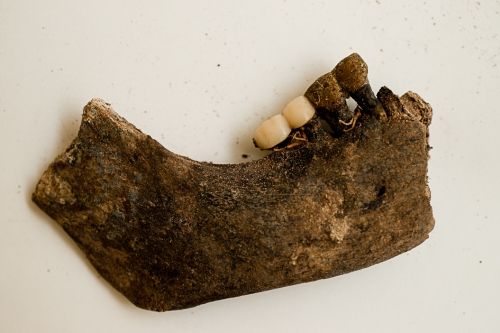
HP: I was with the Khmer Rouge but I got my orientation and training from the Viet minh. Other friends in the commercial section who worked under Chuon Soth were all from the Viet Cong group. So we behaved and conducted ourselves according to the Viet Cong doctrine. The arrest of Chuon Soth on August 14th was a bad sign for us. We knew that we were in the midst of danger. Sooner or earlier we will be arrested too. In their regard we made a secret plan for the flee. One day our plan was revealed. The regional chairman was the first who was arrested and shot to death. Then the Angka took the tariff controller and put into custody. Sinu. I was trade adviser to Chuon Soth the Angka arrested me and put me in the jail for one month. While in custody my hands were tied and they beat me with hammock twine. After one month I was released and I ran away.
MF: How long did it take to flee?
HP: I left on November 23rd and arrived Tay ninh on November 27th.
MF: What was the difference to the Khmer Viet Minh and the Khmer Rouge.
HP: Earlier in 1954 the Khmer Viet Minh and the Khmer Rouge were grouped together. Late in 1954 after the Geneva Conference one group remained in the county and the other joined the Viet Minh in Hanoi. When the latter group returned from North Vietnam they called them Khmer Viet Minh and those who remained in the country as the Khmer Rouge.
MF: Have you ever given any injection and what type?
HP: I gave three shots of Largactyl.
MF: What were those good for?
HP: For treatment of nervous tension as well as the nervous breakdown and insomnia.
MF: Why did they put you to work at the hospital. You know about medicine or anything like that?
 Khmer Rouge troops near the area where journalists vanished |
HP: Before I joined the communist in the forest I had knowledge about injection but wasn't too good. Since the communist had a short number of nurses so that they put me to work in the hospital. The Angka sent me to train with the Viet Cong in earlier 1971 until late the same year.
MF: How long have you been trained with the Viet Cong.
HP: It was from Feb 71 to October 71.
MF: Where was it?
HP: In the jungle of Ta-Am, just right on the Cambodia-Vietnam border. It was on the Cambodian side in the province of Prey Veng.
MF: How did the American journalist dress?.. with or without shoes?
HP: He dressed in green like the Viet Cong uniform.. there was no shoes while he was walking.
MF:Do you know whether it was the Khmer Rouge or the Viet Cong who captured him?
HP: No. But the Khmer Rouge were with him at that time.
MF: Was there any marks such as his name or anything on his grave.
HP: There was no marks on his grave. All the graves were lined up in rows each grave was implanted with some branch of a tree as a landmark. However all the name of the death could be found in the registered book.
MF: How big is the cemetery?
HP: It is pretty big and located on the hill.
MF: Which direction did it face?
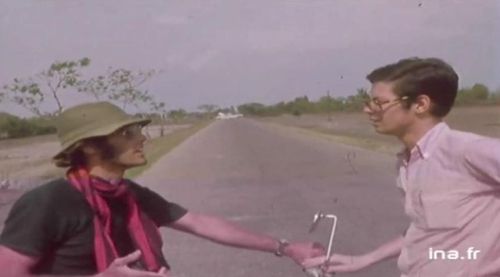 Sean Flynn's last words are a story of concern for fellow press |
MF: How many graves are their in the cemetery?
HP: Too many.
MF: Whose graves?
HP: Cambodian and Vietnamese. All dead persons were sent there and buried.
MF: What was the hospital...in wood or bamboo?
HP: In wood and covered with thatch.
MF: How many patients did they put in one hut?
HP: Four for slightly wounded patients. There was also an underground shelter with a capacity of 50-60 patients. The underground was used only for the patients who were seriously sick and wounded.
MF: Where did they put the journalist? In the hut or underground?
HP: In the consultation room. They gave him a shot first and another later and then he was taken to...
MF: Do you have any idea why he was captured so long tim and then suddenly they decided to kill him?
HP: I don't know but I think that they wanted to investigate and get more information before they killed them. They did also with the government soldiers.
MF: What type of government soldiers did they usually kill them?
HP: They killed mostly the commissioned officers and those who were low in grade may have chance to survive.
MF: Why did they kill those soldiers?
HP:Because they considered them their enemies.
MF: Did you hear of any other journalists or foreigners captured by the Khmer Rouge?
HP: There were rumors and I don't want to tell you something I didn't see myself.
MF: What was the interval time between the first shot and the second injection?
HP: It was about 10 minutes.
MF: Was there any reaction after the shot?
HP: Just a little bit reaction of muscle contraction before he was dead.
MF: Why did they know he wasn't dead after he got the first shot?
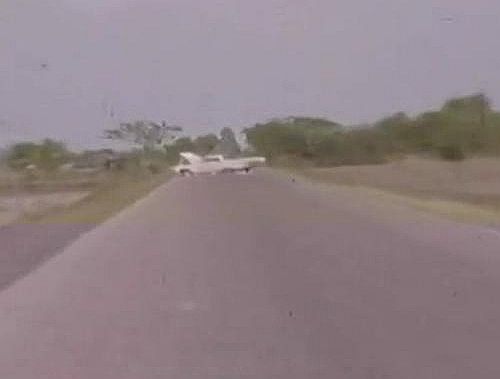 This car carried the two Japanese journalists and their driver |
MF: And after the second shot?
HP: He layed down quietly and his eyes were closed.
MF: Did the doctor check his heart or anything?
HP: No. Everybody just walked out after the second shot.
MF: Was the ground dug before or after he was dead?
HP: Actually they dug 4 to 5 holes everyday.
MF: Did they wrap the body with anything?
HP: With plastic sheets.
MF: What color?
HP: Dark Green.
MF: Was there any landmark on the grave?
HP: Nothing.
MF: How did they set the graves?
HP: They lined them up in a row but i dont remember exactly.
MF: Who was the man who handled the death registered book?
HP: People who worked at the cemetery and also the head of the hospital.
He says there are some safeguards in place that will allow them to conduct their own research if necessary, but hope that the US authorities will take the high road and work to identify these remains, even if they are not American, even if they belong to a journalist.
MacMillan said, "In order to confirm the identification of these remains, we would appreciate if the remains our team recovered that were handed over to JPAC on the 26th of March 2010, are given to the appropriate Japanese Government Authority in order to clarify the identity of the remains."
That sure doesn't seem like a tall request. It is important to remember that so many people from the Khmer Rouge who executed millions during the 1970's genocide, are alive and well today and very wary about being arrested by the war crimes tribunal. MacMillan, his team and Rory Flynn, have had many challenges in their efforts to help locate Sean Flynn. Rory was clear from the start that even if the remains weren't those of Sean Flynn, she would be extremely happy to have made the investment, to help locate any of the missing journalists, or military personnel who remain missing today somewhere in Cambodia.
[1] May-21-2010: Clearing the Air for Missing Photojournalist Sean Flynn's Family - Tim King Salem-News.com
Previous Salem-News.com reports:
- Mar-31-2010: Reports Citing Discovery of 'Remains of Sean Flynn' Presumptuous and Misleading - Tim King Salem-News.com
- Apr-07-2010: The Mysterious Disappearance of Sean Flynn and Dana Stone - Tim King Salem-News.com
- Mar-29-2010: Sean Flynn's Remains Possibly Found in Cambodia - Tim King Salem-News.com
- May-15-2008: Remembering Sean Flynn: a Photojournalist Who Died at War (VIDEO) - Tim King Salem-News.com
- Jul-27-2009: Hallie Ford Museum of Art Features Vietnam War Photo Exhibition - Salem-News.com
- Mar-17-2009: Whatever Happened to Sean Flynn and Dana Stone? - Salem-News.com
- Mar-20-2009: We Were There and We Cared - By Perry Deane Young for Salem-News.com
- Jun-10-2008 :Why Did the FBI Let Roxanna M. Brown Die? - Tim King Salem-News.com
- Jul-10-2009: Death of Vietnam War Photographer Roxanna Brown is Costly for SeaTac - Tim King Salem-News.com
- Aug-10-2006: Media, the French, War and Americans - Op-Ed by Tim King Salem-News.com
- Jun-10-2009: The Lurid Artistry of the Mexican Lobby Card - By Anthony Wright Special to Salem-News.com
 Tim King is a former U.S. Marine with twenty years of experience on the west coast as a television news producer, photojournalist, reporter and assignment editor. In addition to his role as a war correspondent, this Los Angeles native serves as Salem-News.com's Executive News Editor. Tim spent the winter of 2006/07 covering the war in Afghanistan, and he was in Iraq over the summer of 2008, reporting from the war while embedded with both the U.S. Army and the Marines.
Tim King is a former U.S. Marine with twenty years of experience on the west coast as a television news producer, photojournalist, reporter and assignment editor. In addition to his role as a war correspondent, this Los Angeles native serves as Salem-News.com's Executive News Editor. Tim spent the winter of 2006/07 covering the war in Afghanistan, and he was in Iraq over the summer of 2008, reporting from the war while embedded with both the U.S. Army and the Marines.
Tim holds numerous awards for reporting, photography, writing and editing, including the Oregon AP Award for Spot News Photographer of the Year (2004), first place Electronic Media Award in Spot News, Las Vegas, (1998), Oregon AP Cooperation Award (1991); and several others including the 2005 Red Cross Good Neighborhood Award for reporting. Serving the community in very real terms, Salem-News.com is the nation's only truly independent high traffic news Website. You can send Tim an email at this address: newsroom@salem-news.com
Articles for July 25, 2010 | Articles for July 26, 2010 | Articles for July 27, 2010

Salem-News.com:
googlec507860f6901db00.html



Terms of Service | Privacy Policy
All comments and messages are approved by people and self promotional links or unacceptable comments are denied.
Marianne Meyers July 27, 2010 12:23 am (Pacific time)
Interesting videotape of Sean Flynn with the French journalist. Hopefully now, people will see that Sean and Dana didn't race rashly into danger, but were seeking to assist journalists who had just been captured. Too many think that Sean had a deathwish, when I don't believe that is the case. There is much evidence that doesn't support this theory.
[Return to Top]©2025 Salem-News.com. All opinions expressed in this article are those of the author and do not necessarily reflect those of Salem-News.com.